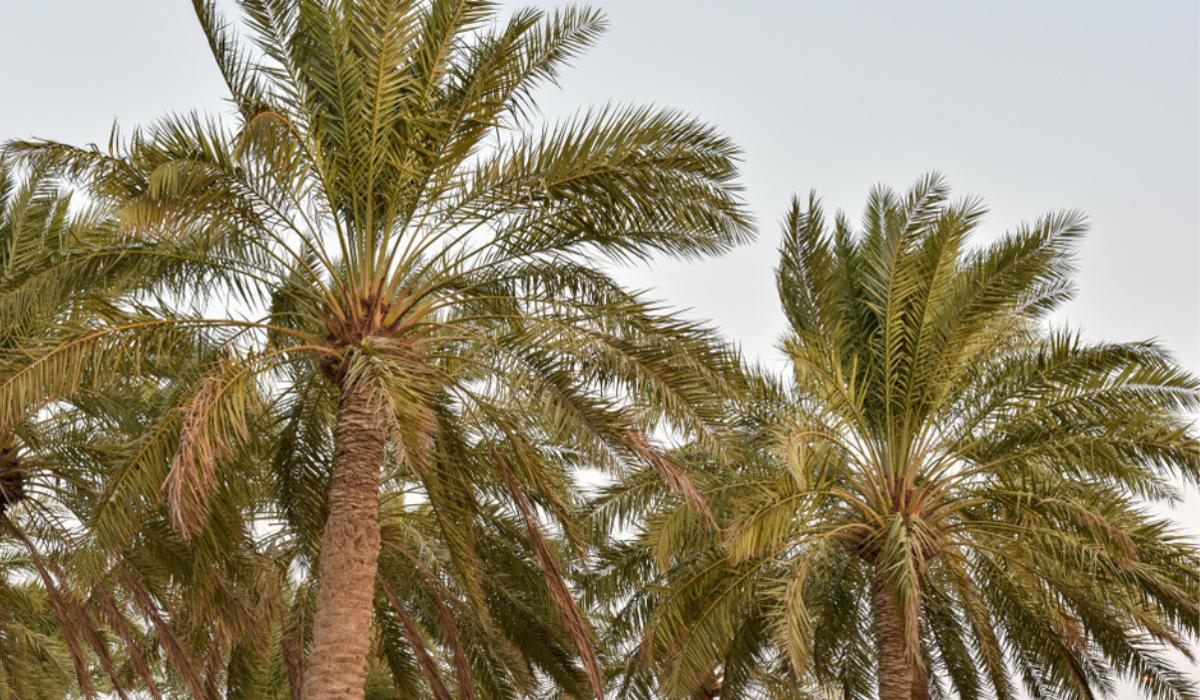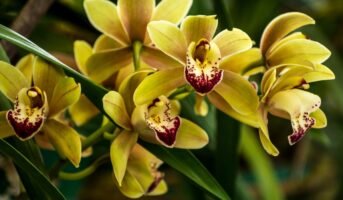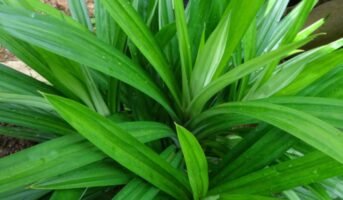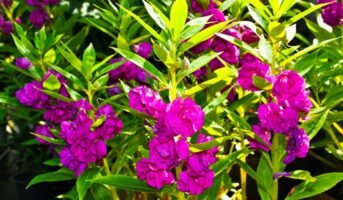Palm trees are the ideal plants for tropical-themed gardens and poolside areas since they have a presence of their own. The first thing about palm trees you should know is that they are not trees. The proper classification for palm trees is as a woody perennial, similar to bamboo. The Aceraceae family includes all different species of palm trees. However, there are differences in how palm trees are classified.
Many of the most well-known palms are not just from various genera but also from different species. The physical variation among the various types of palm trees is matched by the genetic variety. However, you may expect to encounter palm trees in a variety of sizes and shapes, given that the Aceraceae family contains more than 2,600 species.
There are types of palm trees to match your landscaping demands whether you reside in a subtropical region of the country or a colder climate; it may just need to be cultivated in a container and carried indoors for the winter. The range of form and texture is quite wide, especially if you visit the palm nurseries where some of the most unusual varieties are kept.
see also: all about Bamboo Palm
Royal palm
One of the most majestic species, royal palms (Roystonea spp. ), are frequently found in streetscape plantings in southern Florida and can grow up to 70 feet tall. They are renowned for their neatly arranged leaves and the lovely, smooth green area of their trunk that is directly beneath the canopy.
They don’t have a particular preference for soil, but they do require full light and a lot of irrigation; they can even withstand brief flooding.
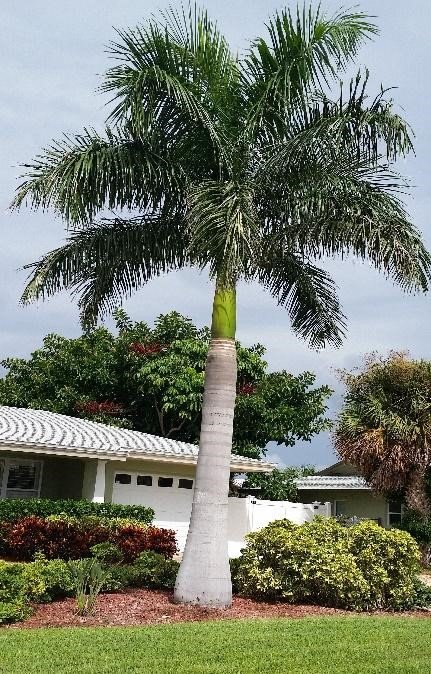
Source: Pinterest
see also about: Fig tree ficus carica
Cane palm
The cane palm (Chrysalidocarpus lutescens), a popular houseplant that is typically grown in pots, produces an appealing upright cluster of fronds but may not develop a trunk. One of the most well-known and eye-catching palms, the Gold cane palm has golden stems and yellow-green fronds.
The leaves curl upward in many stalks to give the plant its alternate name of butterfly palm. In areas without frost, it can be cultivated outdoors, where it produces several trunks that resemble thick canes of bamboo. It can tolerate drought pretty well, but it requires great drainage, which can be provided by potting it in a light planting mix.
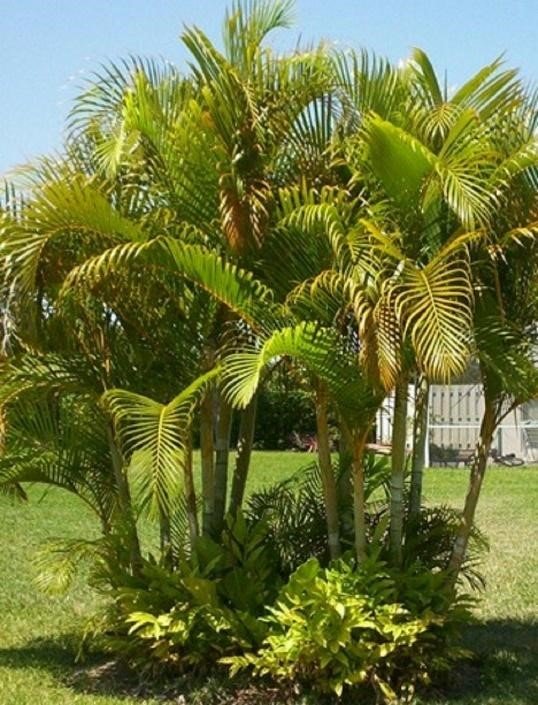
Source: Pinterest
all about: orange tree flowers
MacArthur cluster palm
The MacArthur palm (Ptychosperma macarthurii), which is depicted as a young specimen, bears enormous drooping flower clusters that dangle several feet below the canopy as it matures, making it quite a stunning specimen. The tree continues its flowering and fruiting cycle year-round for a continuous display of colour.
The flowers give way to colourful fruits. These little palms can tolerate full sun, full shade, or any combination thereof and normally reach a height of no more than 15 feet. It is a hardy species that can withstand drought and grow in almost any soil type. For dramatic effect, it is frequently planted in groves.

Source: Pinterest
Butia palm
The Butia species, also known as pindo palm (Butia capitata), is short and robust with gigantic fronds that can reach a length of 10 feet with blue-green to grey-green leaves, gracefully curved downward toward the trunk. It is extremely drought-tolerant and slow-growing.
One of its most distinctive features is the yellow-orange, sweet and scrumptious, edible fruits, which are essentially a form of date and can be jammed and preserved.

Source: Pinterest
Coco palm
The coco palm (Cocos nucifera), with its tall, slender trunk and little canopy that floats in the wind, is maybe the most well-known palm in the world. It is one of the greatest plants for beautifying seashore areas because it can grow to a height of 100 feet and can withstand gusts as strong as hurricanes.
Its requirements are minimal as long as you live in a climate with average temperatures above freezing. However, it prefers sandy soil and lots of moisture.

Source: Pinterest
Foxtail palm
In the world of palms with coarse textures, the foxtail palm (Wodyetia bifurcata) is an extremely refined species. Unlike other palms, which have dark brown trunks, this palm has soft, bushy fronds that resemble a fox tail.
It grows quickly, tolerates sun or shade, can withstand drought, and looks rich when given enough moisture. It is a medium-sized tree that may be cultivated in cold locations because it is tolerant to container culture.

Source: Pinterest
Bottle palm
Hyophorbe lagenicaulis, or bottle palms, are easily recognised by their inflated stems that taper toward the canopy like an old-fashioned soda container. Despite only growing slowly to a height of 20 feet, this heat-loving species is satisfied to spend its entire life in a sizable planter as long as it is in a sunlit place.
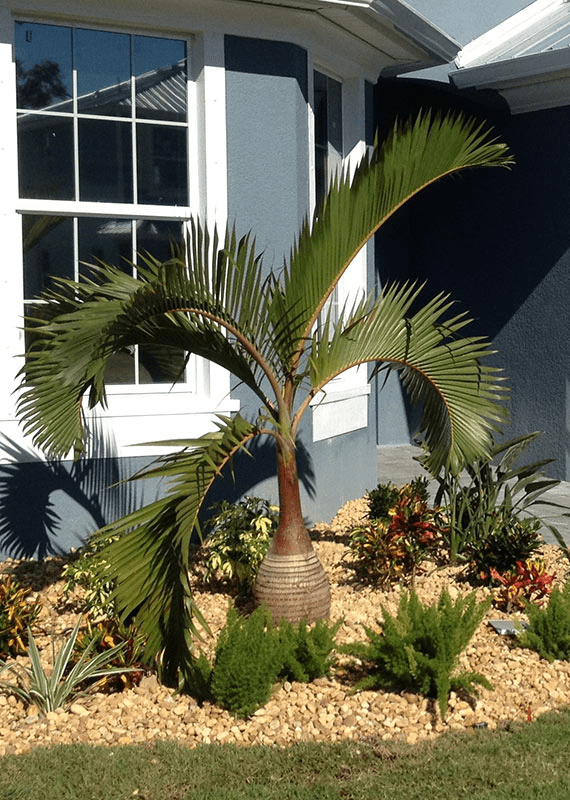
Source: Pinterest
Silver date palm
This palm, also referred to as a sugar date palm (Phoenix sylvestris), is related to the species that yields the common edible date, albeit less frequently. The circular canopy’s lush, blue-green foliage is carefully structured.
It is a native of India’s arid scrublands and prefers loose, well-drained soils. Although it can withstand prolonged drought, it can look a little scruffy without a regular irrigation schedule.

Source: Pinterest
Silver fan palm tree
The silver fan palm (Chamaerops humilis), also known as wild date palm, grows as a multi-trunked specimen that forms clumps that can reach heights of up to 20 feet and a width of 10 feet.
The foliage is in the form of a silver-green fan-shaped frond, and the trunks have a distinctive arched diamond structure. It can survive temperatures as low as 15 degrees. It is one of the most cold-tolerant species of palm and can withstand intense heat, drought, poor soil, strong winds, and other environmental stresses.

Source: Pinterest
Silver thatch palm
The silver thatch palm (Coccothrinax proctorii) features silver-green fan-shaped fronds as well, albeit, in this instance, the silvery tint is on the underside. It has a thin, tight crown and grows upright to a height of around 20 feet with just one trunk. The silver thatch palm is known to thrive on rocky outcrops in its natural habitat and is as hardy as nails.

Source: Pinterest
Canary Island date palm
Canary Island date palms (Phoenix canariensis) are one of the most common palm trees to be planted in the backyard landscape. It is a dramatic species that is typically seen with a short trunk and enormous crown of fronds that resemble a pom-pom.
It is extremely adaptable to soil types and watering schedules, but it does need the laborious annual maintenance of trimming off the enormous fronds as they age.
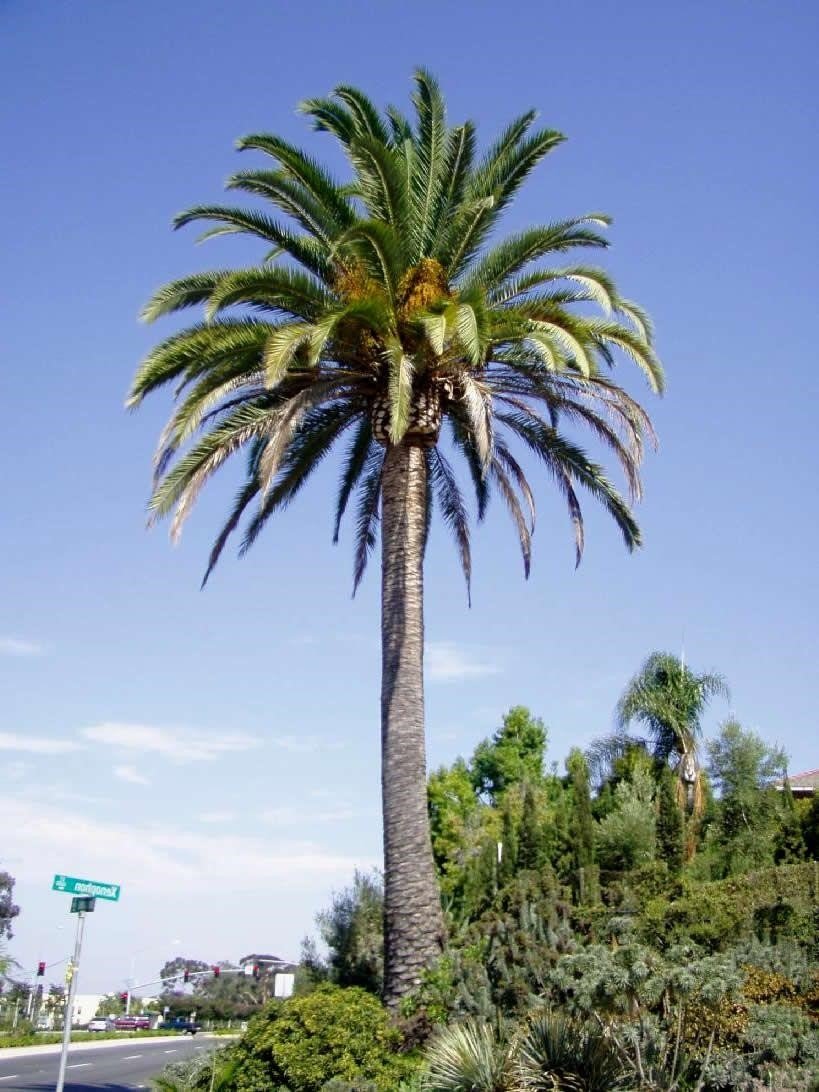
Source: Pinterest
Kentia palm
A common indoor plant, the kentia palm (Howea forsteriana), is a small, slow-growing species.
With soft green fronds and trunks that resemble thick bamboo canes, it is extremely beautiful.
The sentry palm moniker comes from the fact that it is frequently planted near entranceways. It works well as a houseplant because it prefers deep shade. To give it the best chance of growth, grow it in a sizable planter with light potting soil and allow the soil to dry between waterings.

Source: Pinterest
Chilean wine palm
The largest palm in the world, the Chilean wine palm (Jubaea chilensis), can grow up to 100 feet tall and have a trunk diameter of up to 5 feet. However, it takes the monolithic trees hundreds of years to develop to this magnitude. They are harvested for their sap in their native Chile, where it is processed into a syrup-like substance. They love dry, well-drained soil and are tolerant of drought.

Source: Pinterest
Kaivatu Palm
Belonging to Fiji Islands, Kaivatu Palm has a slender tree trunk that also has yellow-green arching front.
Winin Palm
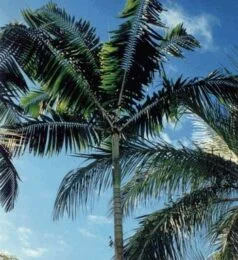
Source: Pinterest
Winin palm are large palm trees from Vanuatu. Although they grow fast, it’s difficult for them to grow in cool climates.
Trithrinax Palm

Source: Pinterest
They are natives of South America and are compact and short having green to grayish foliage. The trunk of the Trithrinax Palm is hidden by dry dead leaf bases that belong to the previous seasons.
Dragonhead Palm
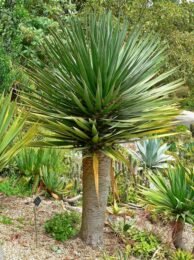
Source: Pinterest
Native to Madagascar, these spiky trees are easy to maintain and are very attractive.
Amargo PalmStone

Source: Pinterest
Amargo Palm has a single trunk that is reddish brown. It has many ring shaped scarrings and bears yellow-white flowers. While the young amargo palms are red, the older palms have green leaves.
Fishtail Palm
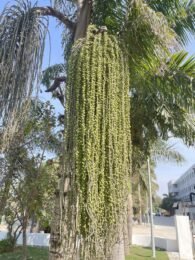
This palm tree stands out for its unique foliage. The leaves of the Fishtail Palm are bipinnate that look like a fishtail.
Triangle Palm
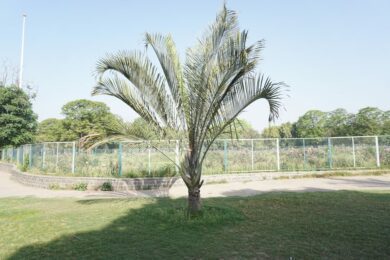
Native to Madagascar, the triangular shape palm name is because of the leaf arrangements along the stem.
Mazari Palm

The Mazari Palm is known for its cold hardiness and is prevalent in countries with cold climates.
Bismarck Palm

The Bismarck Palm Tree is an ornamental tree that is known for its large, silvery-blue fronds and thick trunk.
FAQs
Which palm is known to be planted in the backyard?
The Canary Island date palms (Phoenix canariensis) are one of the most common palm trees to be planted in the backyard landscape.
Which palm is the most common indoor plant?
The Kentia palm is a common indoor plant which is a small and slow-growing species.
Housing News Desk is the news desk of leading online real estate portal, Housing.com. Housing News Desk focuses on a variety of topics such as real estate laws, taxes, current news, property trends, home loans, rentals, décor, green homes, home improvement, etc. The main objective of the news desk, is to cover the real estate sector from the perspective of providing information that is useful to the end-user.
Facebook: https://www.facebook.com/housing.com/
Twitter: https://twitter.com/Housing
Email: [email protected]
